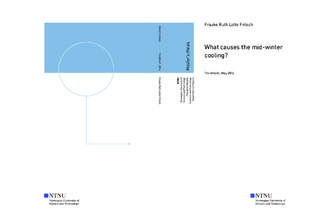| dc.description.abstract | This thesis investigated the influence and conditions of vertical propagation of
planetary waves on the mid-winter cooling in the southern hemispheric polar meso-
sphere. MERRA zonal wind data was used to extract planetary waves with zonal
wavenumber 1, 2 and 3 at 72°S in 2008 and 2009. The wave periods of 4, 5, 10
and 16 days were separated using Morlet wavelet analysis.
A correlation between the wave amplitude and carbon monoxide as a tracer for
vertical motion could be found from autumn until late winter (from March until late
August/mid September). Between the wave amplitude and the mean zonal wind
anticorrelation was shown from early winter until late winter (April until late Au-
gust/mid September). Both correlations were found to stop when the mesospheric
circulation restores in September. In addition agreement between calculations for
the upper bound of the Charney-Drazin criterion for vertical propagation and the
wave activity was found until late August/mid September. | |

